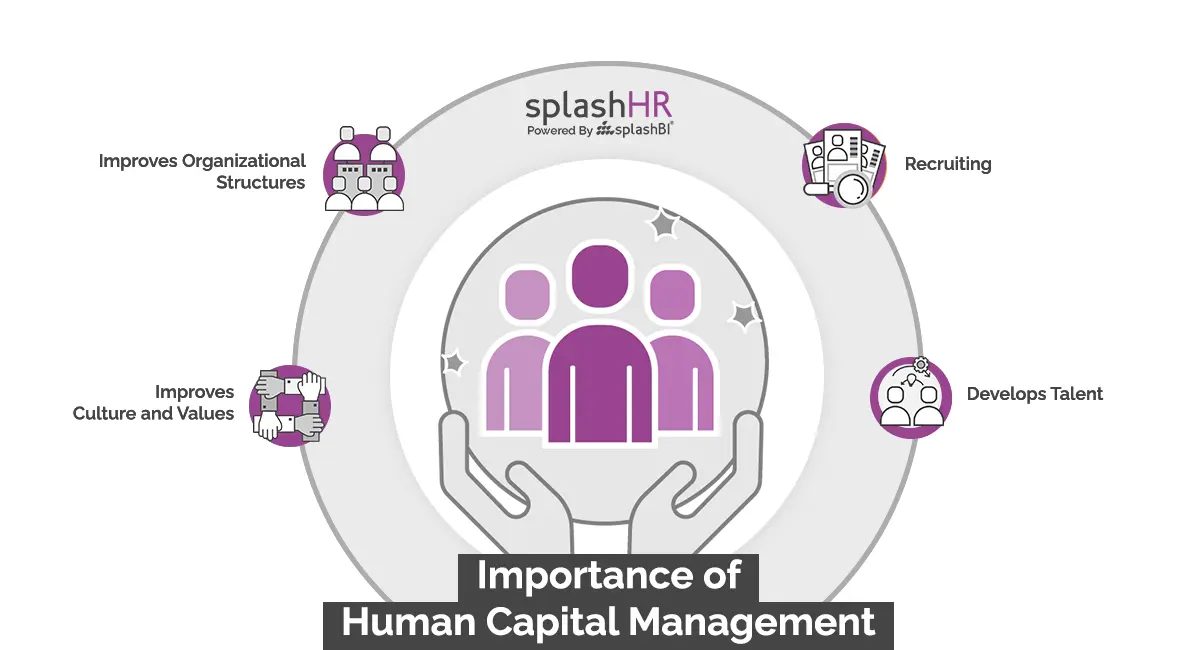HCM or Human Capital Management is a critical aspect for every company since employees keep the company growing. The significance of HCM grew over the last decade when developed countries moved from product-based organizations to service-based organizations.
Companies require human capital to perform and prosper. It is the employees who define how much a business can develop, innovate, and achieve its mission. Human capital management is how an organization goes about training and improving its people: the more strategic the strategy, the more productive the workforce.
What is Human Capital Management?
Human capital management is a necessary set of practices and methods companies use to manage the employee life cycle. It helps streamline all tasks linked to acquiring, developing, and retaining your workforce. It involves candidate tracking, onboarding, benefits administration, payroll, time and attendance, training management, and more.
 What is the Purpose of Human Capital Management?
What is the Purpose of Human Capital Management?
The purpose of Human Capital Management is to optimize and enhance an organization’s human capital’s economic or business value to get a competitive edge. Effective human capital management empowers the company to pursue human capital initiatives triumphantly.
Importance of HCM
HCM and human resources management, or HRM, are firmly tied to each other but are not identical. HCM is broad because it involves human resource (HR) practices and other work systems and people management policies that increase organizational performance. A critical distinction between HRM & HCM is that human capital extends well beyond the HR function to encompass its comprehensive people analytics strategy.
1. Improves Culture and Values
Today, people both within and outside the company have the inside scoop on business decisions, employee opinions, salaries, and management techniques. Employees have so many job opportunities at their fingertips with greater insight into how different organizations work. Hence, leaders now treat employees more like customers.
Today, employees are looking for faith, bonds, impact, and personal growth. Handling all these expectations can be overwhelming, so discovering a balance that works for your company is vital.
By considering job design, management, leadership development, and work environment, the organization’s culture can adjust to this dynamic work environment. It finally leads to greater employee retention and engagement, which increases productivity.
2. Improves Organizational Structure
Along with a more significant investment in human capital, companies are reconsidering the makeup of their structures. Prospective employees are demanding more autonomy and decision-making ability. Businesses focus on changing organizational structures to accommodate that for employees.
Many organizations believe that granting employees more autonomy to make decisions and manage work holds them responsible and adds a new layer of meaning to their job.
3. Recruiting
Strategic Human Capital Management involves:
- Improving practical tactics for recruiting.
- Hiring
- Interviewing
- Firing employees
It could make or break the way your business is seen, who prefers to work there, and how you get the most suitable candidates for roles.
Hiring someone to fill a void is never the correct solution. If the person is not the right fit, it could mean difficulties for the organization’s future.
Hiring teams must understand a candidate’s history, interest, and professional goals and abilities to put a complete plan together for that employee’s trajectory within the organization.
4. Develops Talent
Human capital management enables businesses with strategies to execute professional development programs and manage employee performance. Employees are looking for ways to improve their skills to develop within their organizations and careers. It also enables organizations to strengthen from within, which reduces costly turnover and enhances employee retention.
Having key milestones and systems for tracing performance will help you navigate when employees succeed in their work and know if they need support. By placing metrics to track productivity and performance, employers can efficiently allocate benefits.
SplashBI for HR at your Rescue!
SplashBI for HR is natively built for the cloud and is a comprehensive solution connecting every human resource process from hire to retirement. We deliver a uniform experience across devices, allow one source of truth for HR data to enhance decision-making.
With SplashBI for HR, you can efficiently handle a global workforce. Design, control, and optimize global people processes with a single shared data source. Make more reliable decisions, personalize your employee experiences, and leverage extremely configurable workflows that allow scalability.
SplashBI for HR holds expertise in outlining tailored HCM Software that fits your individual needs. Be it compliance, improving employee performance, or optimizing, we have got it all covered. SplashBI for HR is the most powerful and connected solution for all your HR demands operating as a trusted source of information, hence enhancing decision making.
Knowing the value of human capital management is vital to do a more reliable job at hiring the right talent, onboarding and teaching them, and building a performing organization. If you are looking for more information on HCM or engaging in meaningful conversations around the subject, We are SplashBI for HR!











